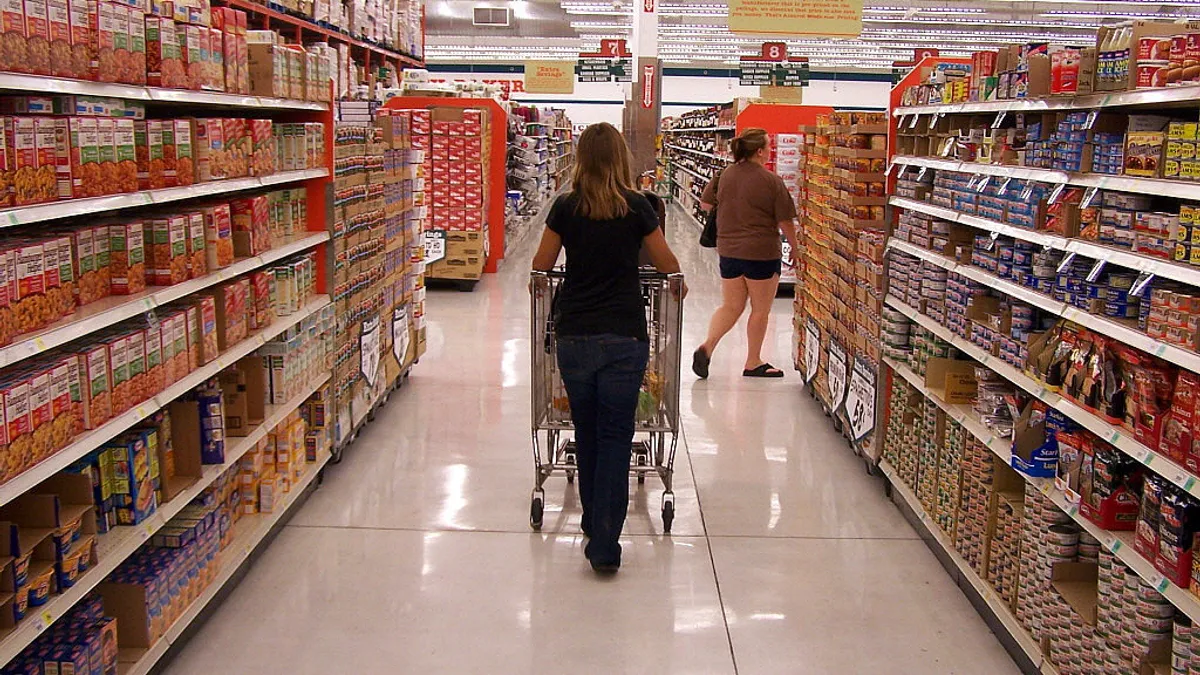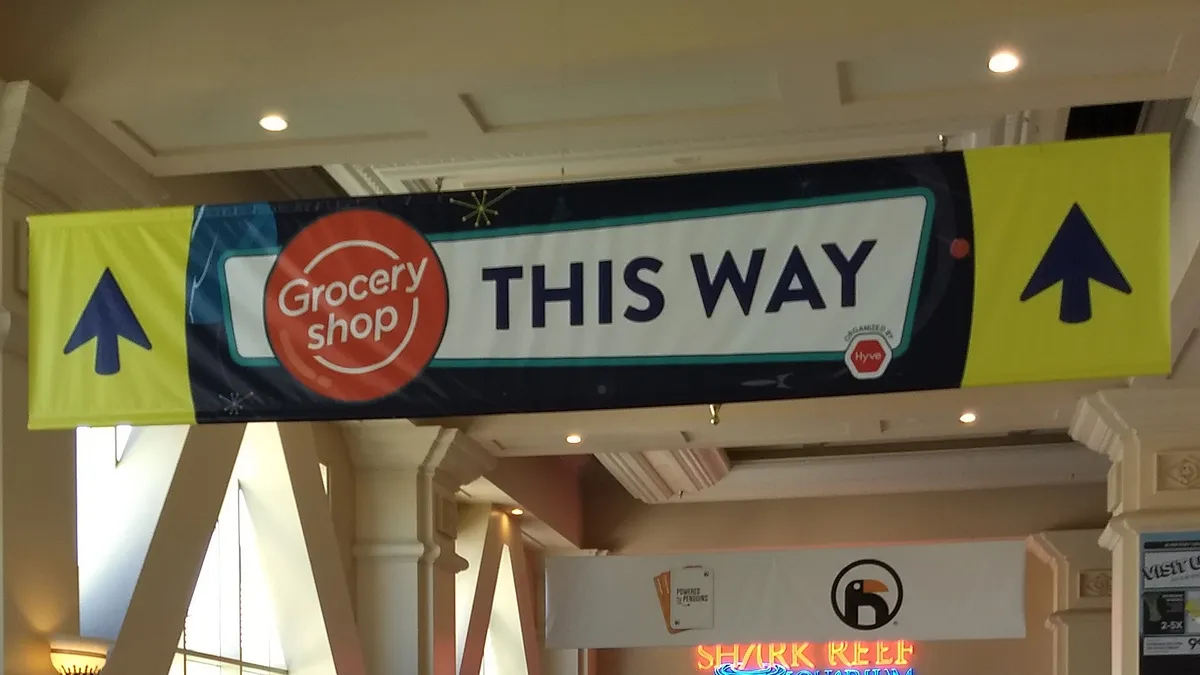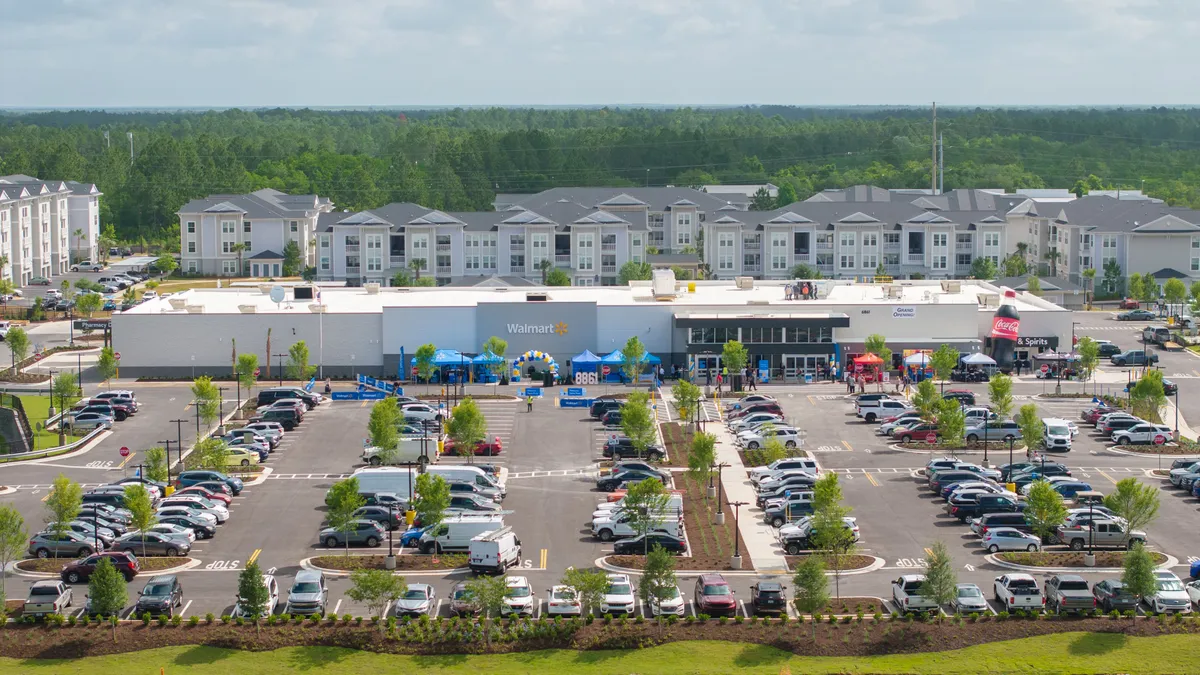Dive Brief:
- Households that live more than half a mile away from a SNAP-authorized supermarket and do not use their own vehicle to travel to stores spend just as much of their weekly food budgets at large grocery stores (57%) as access-secure households (58%), according to the U.S. Department of Agriculture’s Economic Research Service.
- These access-burdened households visit grocery stores with less frequency than access-secure households, according to the ERS. At the same time, access-burdened households also visit restaurants with less frequency, and spend less money at restaurants per visit.
- “These findings suggest that access-burdened households overcome limited food retail options to spend similarly to sufficient-access households at large stores,” the report’s authors noted.
Dive Insight:
According to the authors of this ERS report, there’s an assumption that lacking convenient access to a supermarket means consumers instead turn to convenience stores, fast-food restaurants and other nearby outlets that tend to carry less healthy fare. As this study indicates, many access-burdened consumers are going out of their way to visit full-service grocery stores.
Supermarkets will find this to be welcome news. They’re happy to be a priority destination for customers. They may also view these results as further support for their decision not to build stores in food deserts. If most shoppers are already going out of their way to reach stores, retailers might reason, why take the risk and build in these low-income areas?
Grocers like the economics of affluent, high-density markets. But research is increasingly showing that low-income, often overlooked markets are a worthy investment, too. In addition to this latest ERS study, a recent report from the USDA shows SNAP consumers spend the same amount of money on the same things as other consumers. This includes 40 cents out of every dollar that goes towards “basic items” like meat, produce and dairy.
At the very least, grocers should do more to help shoppers get to their stores. Some nonprofit organizations offer free rides. In Detroit, a startup company called Cart offers round trip service for $10 to the city’s two Meijer locations using the ridesharing service Lyft. Supermarkets could offer free shuttles, a discounted ride service like Cart, or simply promote public transit routes to stores.
The investment would be worthwhile, according to the ERS study. Access-burdened consumers spend a considerable amount of their food budgets at grocery stores. However, they also spend a significant amount at convenience stores, which are dollars that supermarkets could claim.










